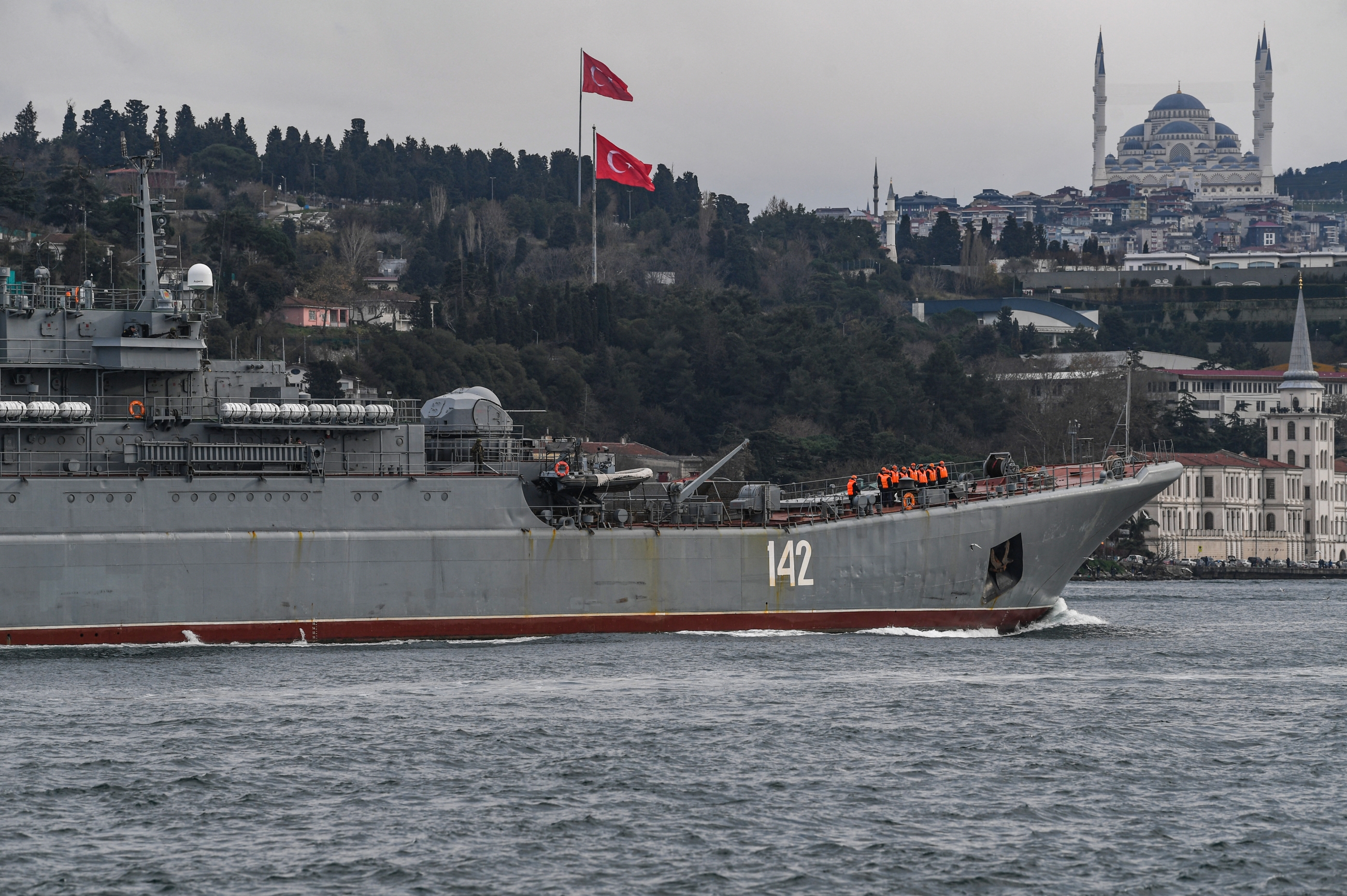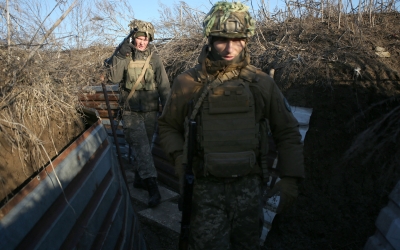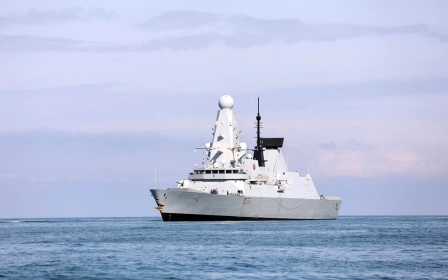Russian warships depart Syrian port for drills in Black Sea

A large group of Russian warships began transiting the Bosphorus Strait on Tuesday, making their way from the Mediterranean to the Black Sea, in what Russia's defence ministry said was a pre-planned movement for military exercises.
Russia is staging military drills across multiple fronts from the Pacific to the Atlantic, as tensions with the West escalate over Ukraine. In January, it announced that six amphibious landing vessels from its Northern Baltic fleet would be sailing to the Mediterranean for exercises.
The vessels docked on Friday in the Syrian port of Tartus, a key Russian naval base for refuelling, maintenance and supplies. The announcement on Tuesday was the first official acknowledgement that the ships’ end destination is the Black Sea.
'The Russian Navy ensured it would not bump up against the Montreux Convention'
- Stephen Flanagan, Rand
Turkey has exclusive rights to govern passage through the strait under the 1936 Montreux Convention, which limits the warships that states who do not border the Black Sea can send through the Bosphorous.
Non-Black Sea states must notify Turkey 15 days ahead of their planned transit, and cannot stay in the sea for more than 21 days.
New MEE newsletter: Jerusalem Dispatch
Sign up to get the latest insights and analysis on Israel-Palestine, alongside Turkey Unpacked and other MEE newsletters
Russia, along with the five other states bordering the Black Sea, is given more leeway to navigate the passage and must notify Turkey only eight days in advance of transit.
Under the Montreux Convention, Turkey is not obliged to grant transit for military vessels in the event of active war, or if it is threatened with an "imminent danger of war".
'Pressure on the Ukrainians'
According to the Russian defence ministry, the vessels include the Korolev, the Minsk and the Kaliningrad, which were set to navigate the Bosphorus on Tuesday, while the Pyotr Morgunov, the Georgy Pobedonosets and the Olenegorsky Gornyak are expected to pass on Wednesday.
Stephen Flanagan, a senior political scientist with Rand, told Middle East Eye that Russia’s decision to send the vessels in two batches was intended to prevent them from breaching a total 15,000 tonnage limit on the passage of all foreign naval forces through the Turkish strait at any one time.
“The Russian Navy ensured it would not bump up against the Montreux Convention,” Flanagan said.
Flanagan said the movement through the strait would “significantly enhance” Russia’s ability to launch an amphibious invasion of Ukraine, should it decide to do so.
“At a minimum, the buildup of these amphibious capabilities puts pressure on the Ukrainians to keep forces in place to defend its southern coastline and key cities such as Odessa,” he added.
Turkey has found itself trying to balance its position as a Nato member. While it has been a longstanding supporter of Ukraine, it is wary of antagonising Russia too much.
Moscow and Ankara are on opposing sides in conflicts in Syria and Libya, yet they have formed an uneasy partnership to manage their differences in theatres of conflict where their armies operate in close proximity.
"Turkey fulfils all of its obligations as a Nato member, but by the narrow confines of [the Nato treaty] it can do a lot in terms of its own defence and national policy," a European Nato official told MEE previously.
”Turkey puts a premium on talking with Russia.”
Middle East Eye delivers independent and unrivalled coverage and analysis of the Middle East, North Africa and beyond. To learn more about republishing this content and the associated fees, please fill out this form. More about MEE can be found here.





